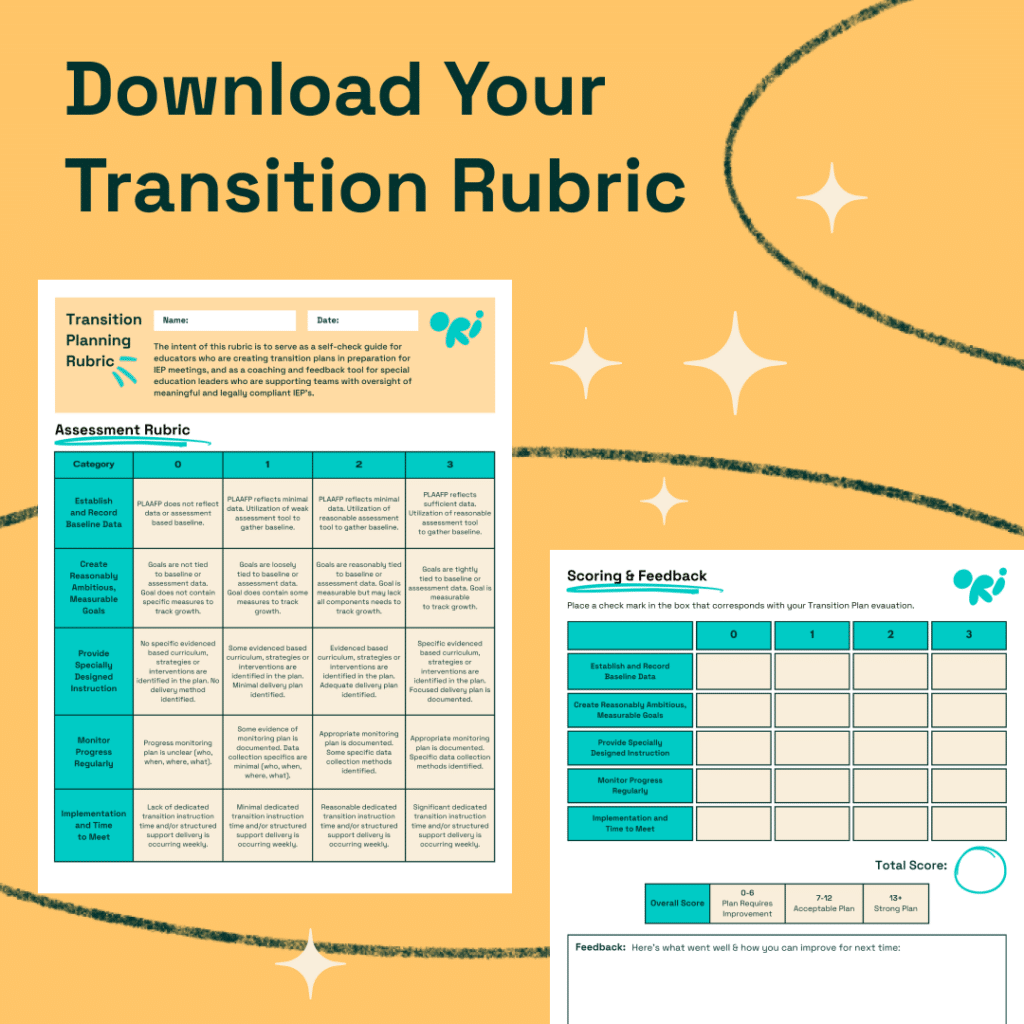
Transition Planning: Are We Failing 75% of Secondary Students with IEPs?


As special educators we are committed to providing the best possible learning outcomes for every student with an IEP. Sometimes, however, in our best effort to serve those most in need during the transition planning process, we end up disregarding others who can benefit from our attention just as much.
This is the case for 75% of special education students who are classed as having mild to moderate disabilities. While these students make up the majority of students with IEP’s, there are often less tailored supports for them.
In this article, we are joined by Dr. Kurt Hulett – a leading special education expert – to explore shortcomings in post-secondary planning for students with IEPs. We will look at why its important to consider appropriate supports for students with mild and mild/moderate disabilities in transition curricula and uncover the consequences for institutions who fail to take these students’ needs into consideration. Finally, we chart a way forward for special educators who want to fill transition gaps at their school or district.
In large part, when we think of post-secondary transition, we think of the importance of supporting students with more significant disabilities and IEPs to obtain employment following high school and preparing for assisted or independent living, functional skills, and navigating the real world after graduation. For this purpose, Dr Hulett argues, the transition field of special education has engaged in strong research and the development of effective approaches, strategies, and tools to assist students with moderate to severe disabilities, primarily:
“When doing a cursory review of transition planning-related companies and products, I found that over 90% of available curricula, assessments, tools, and interest inventories targeted students who would be categorized between moderate to severe on the disability continuum.”
Most practitioners of special education will readily admit that for students with mild to lower-moderate disabilities who intend on pursuing post-secondary education options, the transition process is often perfunctory, cursory, and very few resources, supports, or tools exist to help students prepare for this next journey – whether school or career-specific.


It’s easy to see what’s driving the current state of affairs in transition planning. As Dr Hulett puts it:
“It’s not as though general or special educators don’t care about these students and their potential challenges – they most certainly do. The problem is that many educators see transition services and supports primarily for those students with mid-moderate to severe disabilities who will need considerable supports – functionally, fiscally, and personally – both prior to and following graduation from high school.”
Unfortunately, the great majority of students with disabilities fall into the mild to lower-moderate range. Although estimates vary, less than 25% of all students with disabilities fall into the mid-moderate to severe range. Of course, this means that at least 75% of students with disabilities will fall into the mild to low-moderate range. This would not be such an issue if the statistics following these students were not so alarming.
According to the IRIS Center, The National Longitudinal Study-2 (NLTS-2) data indicate that:
Looking for a comprehensive transition curriculum for students with mild and mild-moderate disabilities?
There are a number of consequences for schools and districts of failing to take into account the needs of students with mild & mild-moderate disabilities during the transition planning process.
One major consequence is the obvious ineffectiveness of having a one-size-fits-all approach to post-secondary transition, which may hamper student’s chances in life beyond high school. But another, potential more damaging outcome for schools and districts specifically, is the increased exposure to legal action that this may entail.
“In my 20-plus years in secondary education and after attending 100’s of IEP meetings, I can say without credible contradiction and a strong degree of certainty that we are in large part not meeting either the legal requirements nor the spirit of the IDEA with regard to Transition Services and students with mild to low-moderate disabilities.”
Dr Hulett’s observation here, of course, is consistent with the tremendous rise in FAPE and Transition-related state complaints and due process hearing filings.
Our Transition Planning Rubric is designed to support district leaders and educators in guiding their teams towards excellence in transition planning.
It provides comprehensive criteria that cover the breadth of transition planning, from gauging student engagement to evaluating post-secondary goals and services.
Expand your team’s capabilities and improve the success of IEP meetings.

Transition plans often lack tailored support for students with mild to moderate disabilities, focusing instead on those with more severe needs, which can hinder their post-high school success.
While less than 25% of students with IEPs have severe disabilities, at least 75% fall into the mild to moderate category, underscoring the need for appropriate support.
Neglecting these students can lead to legal actions against schools and districts due to non-compliance with educational standards and laws like the IDEA.
The first step to overcoming this issue is to acknowledge its prevalence in transition planning today. Taking stock of the shortcomings of our current system will allow us to chart new ways for serving all special needs students with equal care in the future.
Here at Ori Learning we’re committed to enabling successful post-secondary transitions for students with diverse learning needs. Our transition solution is specifically tailored to students with mild to mild-moderate disabilities and features engaging content, powerful translation and accommodations tools, as wells as built in progress monitoring capabilities.